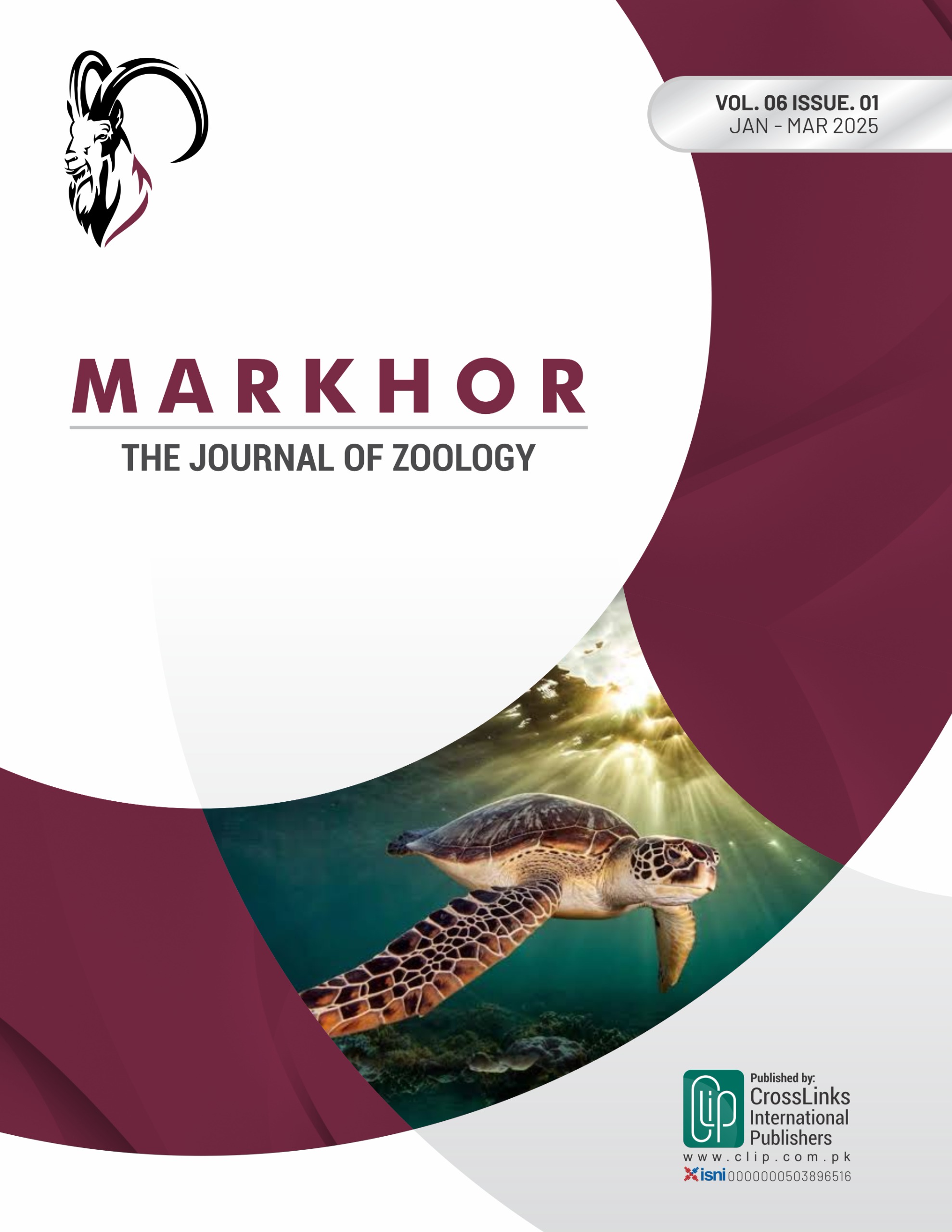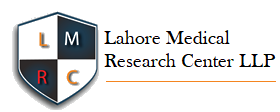In Vitro Antibacterial Activity of Ethanol Extracts of Neem, Papaya Leaves, and Garlic Compared to the Antimicrobial Agent Enrofloxacin against Staphylococcus aureus
Herbal Versus Synthetic Antibacterial
DOI:
https://doi.org/10.54393/mjz.v6i1.156Keywords:
Buffalo Mastitis Management, Herbal Antibacterial Extracts, Papaya for Resistance, Staphylococcus aureusAbstract
Mastitis is a significant health issue in buffaloes, commonly caused by Staphylococcus aureus, and is increasingly complicated by antimicrobial resistance. There is a growing interest in alternative therapies, particularly plant-based antimicrobials. Objective: To evaluate and compare the in vitro antibacterial activity of ethanol extracts of neem (Azadirachta indica), papaya leaves (Carica papaya), and garlic (Allium sativum) with enrofloxacin against S. aureus isolated from mastitis-infected buffalo milk. Methods: Fifty mastitis milk samples were collected and tested for the presence of S. aureus using cultural, staining, and biochemical techniques. Ethanol extracts were prepared from neem, papaya leaves, and garlic. The Minimum Inhibitory Concentration (MIC) of each extract and enrofloxacin was determined using serial dilution techniques. Results: Staphylococcus aureus was isolated from 24% of the samples. MIC values for neem, garlic, papaya, and enrofloxacin were 2.5 µg/µl, 0.312 µg/µl, 0.156 µg/µl, and 5 µg/µl, respectively. Papaya leaf extract showed the highest efficacy with the lowest MIC. All herbal extracts exhibited significant antibacterial activity, with statistically significant differences (P<0.05) among treatments. Conclusions: Ethanolic extracts of neem, garlic, and papaya demonstrated antibacterial activity against S. aureus, with papaya showing the highest potency. These findings suggest that herbal extracts could serve as effective alternatives or adjuncts to conventional antibiotics in managing buffalo mastitis.
References
Gomes F and Henriques M. Control of bovine mastitis: old and recent therapeutic approaches. Current Microbiology. 2016 Apr; 72(4): 377-82. doi.org/10.1007/s00284-015-0958-8.
Ali L, Irfan M, Akhtar M, Qamar-uz-Zaman M, Khan H. Prevalence and antimicrobial resistance of Staphylococcus aureus in mastitis of dairy buffalo. Pakistan Veterinary Journal. 2018; 38(4): 407-410.
Zubairi AM, Aslam N, Saleemi MK, Akhtar M. Epidemiology of bovine mastitis in buffaloes in Pakistan. Journal of Animal and Plant Sciences. 2020; 30(3): 661-666.
Paphitou NI. Antimicrobial resistance: action to combat the rising microbial challenges. International Journal of Antimicrobial Agents. 2013 Jun; 42: S25-8. doi: 10.1016/j.ijantimicag.2013.04.007.
Mediavilla JR, Chen L, Mathema B, Kreiswirth BN. Global epidemiology of community-associated methicillin resistant Staphylococcus aureus (CA-MRSA). Current Opinion in Microbiology. 2012 Oct; 15(5): 588-95. doi: 10.1016/j.mib.2012.08.003.
Januleviciene I, Sadauskiene D, Biziulevicius D. Antimicrobial resistance: A global challenge. Biologija. 2012; 58(4): 159-165.
Aditya A, Galleher C, Ad Y, Coburn M, Zweig A. Enflamasyon ve Kronik Enterik Enfeksiyonlarda Bağırsak Mikrobiyomu. Bağırsak Mikrobiyomu Sağlık ve Hastalıklara Etkisi. 2022 Apr: 149. doi: 10.37609/akya.1823.
Feng S. Guanylate-binding proteins as mediators of inflammasome activation in response to bacterial infection (Doctoral dissertation, The Australian National University (Australia)). 2022.
Alabi QK, Akomolafe AT, Adetona A. Antioxidant and hepatoprotective effects of medicinal plants. Journal of Traditional and Complementary Medicine. 2018 Jul-Dec; 8(1): 95-101. doi: 10.4103/phrev.phrev_52_17.
Mohanasundaram P and Antoneyraj MS. A systematic review of neem flower (Azadirachta indica): a promising source of bioactive compounds with pharmacological and immunomodulating properties. Traditional Medicine Research. 2025; 10(7): 41. doi: 10.53388/TMR20241025001.
Yerima MB, Magaji IA, Umar HD, Yaro A, Ahmadu MA. Antimicrobial effects of neem leaf extract on bacterial pathogens. African Journal of Biotechnology. 2012 Jan; 11(2): 303-307.
Sharifi-Rad J, Mnayer D, Tabanelli G, Stojanović-Radić ZZ, Sharifi-Rad M, Yousaf Z et al. Plants of the genus Allium as antibacterial agents: From tradition to pharmacy. Cellular and Molecular Biology. 2016 Aug; 62(9): 57-68.
Alberts A, Lungescu IA, Niculescu AG, Grumezescu AM. Natural Products for Improving Soft Tissue Healing: Mechanisms, Innovations, and Clinical Potential. Pharmaceutics. 2025 Jun; 17(6): 758. doi: 10.3390/pharmaceutics17060758.
Nugroho RAH, Mulyani T, Harijati WSW. Phytochemical and pharmacological activities of Carica papaya leaf extract. Asian Pacific Journal of Tropical Biomedicine. 2017; 7(3): 228-234. doi: 10.1016/j.apjtb.2016.12.009.
Petrovic J, Mladenovic S, Pecurina S. Enrofloxacin in veterinary use: efficacy and resistance concerns. Veterinarski Arhiv. 2006; 76(3): 247-256.
Kunle OF, Egharevba HO, Ahmadu PO. Standardization of herbal medicines-A review. International Journal of Biodiversity and Conservation. 2012 Mar; 4(3): 101-12. doi: 10.5897/IJBC11.163.
Barboza GE, Cantero JJ, Núñez C, Pacciaroni A, Ariza Espinar L. Medicinal plants: A general review and a phytochemical and ethnopharmacological screening of the native Argentine Flora. Kurtziana. 2009 Dec; 34(1-2): 7-365.
Maddocks SE, Lopez MS, Rowlands RS. Antibacterial effects of garlic extracts. Food Chemistry. 2009; 117(2): 340-343.
Cui Y, Guo F, Cai X, Cao X, Guo J, Wang H et al. Ct value-based real time PCR serotyping of Glaesserella parasuis. Veterinary Microbiology. 2021 Mar; 254: 109011. doi: 10.1016/j.vetmic.2021.109011.
Musyimi CW, Ogur JA, Okoth PF. Antibacterial activity of Carica papaya leaf extracts against clinical pathogens. Journal of Medicinal Plants Research. 2020; 14(6): 309-316.
Akullo J, Nuwamanya E, Kabasa JD. Evaluation of the antimicrobial activity of garlic (Allium sativum) against selected bacterial pathogens. African Journal of Microbiology Research. 2022; 16(3): 137-144.
Abinaya R, Nirmala RV, Monika T, Rani RK, Devi MS. Anticancer Potentials of Ancient Siddha Traditional Plants-A Recent Update. 2020 Dec. doi: 10.20959/wjpps20201-15407.
Saeed MA, Ahmad I, Iqbal A. Comparative antibacterial efficacy of neem leaf extract against selected pathogens. Pakistan Journal of Pharmaceutical Sciences. 2019; 32(5): 2117-2121.
Saleh MS, Jalil J, Zainalabidin S, Asmadi AY, Mustafa NH, Kamisah Y. Genus Parkia: Phytochemical, medicinal uses, and pharmacological properties. International Journal of Molecular Sciences. 2021 Jan; 22(2): 618. doi: 10.3390/ijms22020618.
Oliveira GD, McManus C, Dos Santos VM. Garlic as active principle of sanitiser for hatching eggs. World's Poultry Science Journal. 2022 Oct; 78(4): 1037-52. doi: 10.1080/00439339.2022.2105275.
Downloads
Published
How to Cite
Issue
Section
License
Copyright (c) 2025 MARKHOR (The Journal of Zoology)

This work is licensed under a Creative Commons Attribution 4.0 International License.
This is an open-access journal and all the published articles / items are distributed under the terms of the Creative Commons Attribution License, which permits unrestricted use, distribution, and reproduction in any medium, provided the original author and source are credited. For comments editor@markhorjournal.com











